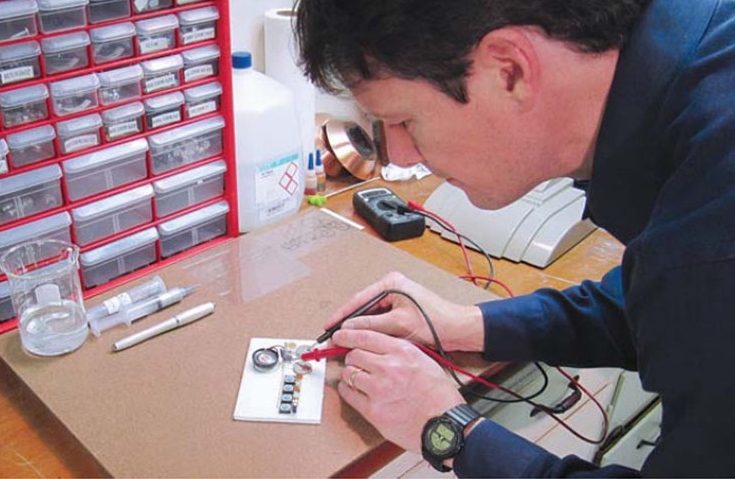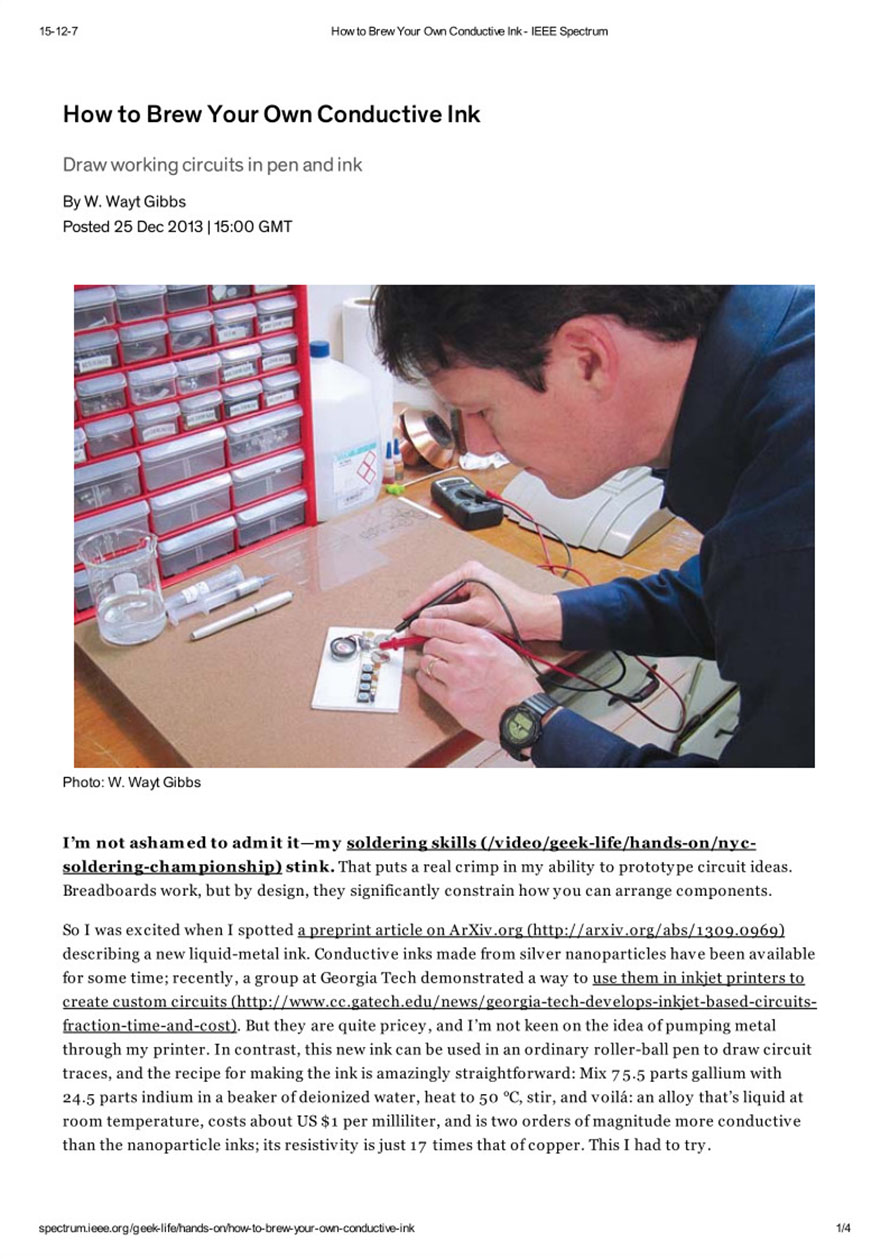國際知名科技雜志《IEEE 縱覽》評介液態(tài)金屬電子書寫技術(shù)
- 分類:行業(yè)新聞
- 作者:
- 來源:
- 發(fā)布時間:2022-09-02 11:55
【概要描述】I'm not ashamed to admit it-my soldering skills (/video/geek-life/hands-on/nyc-soldering-championship) stink.
國際知名科技雜志《IEEE 縱覽》評介液態(tài)金屬電子書寫技術(shù)
【概要描述】I'm not ashamed to admit it-my soldering skills (/video/geek-life/hands-on/nyc-soldering-championship) stink.
- 分類:行業(yè)新聞
- 作者:
- 來源:
- 發(fā)布時間:2022-09-02 11:55
- 訪問量:
How to Brew Your Own Conductive lnk
I'm not ashamed to admit it-my soldering skills (/video/geek-life/hands-on/nyc-soldering-championship) stink. That puts a real crimp in my ability to prototype circuit ideas.Breadboards work, but by design, they significantly constrain how you can arrange components.

So I was excited when I spotted a preprint article on ArXiv.org (http:/ /arxiv.org/abs/1309.0969)describing a new liquid-metal ink. Conductive inks made from silver nanoparticles have been availablefor some time; recently, a group at Georgia Tech demonstrated a way to use them in inkjet printers tocreate custom circuits (http://www.cc.gatech.edu/news/georgia-tech-develops-inkjet-based-circuits-fraction-time-and-cost). But they are quite pricey, and 1'm not keen on the idea of pumping metal
through my printer. In contrast, this new ink can be used in an ordinary roller-ball pen to draw circuittraces, and the recipe for making the ink is amazingly straightforward: Mix 75.5 parts gallium with24.5 parts indium in a beaker of deionized water, heat to 5o C, stir, and voila: an alloy that's liquid atroom temperature, costs about US $1 per milliliter, and is two orders of magnitude more conductivethan the nanoparticle inks; its resistivity is just 17 times that ofcopper. This I had to try.

掃二維碼用手機看
技術(shù)成果
版權(quán)所有:云南科威液態(tài)金屬谷研發(fā)有限公司 滇ICP備16003182號-2
-
咨詢時間:
8:30—11:30
13:00—17:30
頂部



